January 18

Step-by-step Permablitz Guide to set up a Zone 0 Permaculture Kitchen Garden
Council’s Blue Mountains Planetary Health Initiative is half way through a free Permaculture Design Course with young people thanks to the support of a Youth Opportunities Grant. It’s building on a Teacher Training Course we ran in December to support more people to be able to teach permaculture in our community, including young people teaching other young people.
Tomorrow, one of our young teacher trainees will be leading a Permablitz to help the class build a Kitchen Garden (Zone 0 in Permaculture) with a Compost Hub, a herb spiral, a pond and a vege garden. It will be at the old Katoomba Golf Clubhouse site. The idea of a Kitchen Garden is to save energy by having your daily food needs as close as possible to your kitchen door so that you can duck out and grab some parsley, lettuce, chives, lemons or other herbs each time you’re cooking a meal or wanting a cup of tea … rain, hail or shine.
Like our Citizen Science Project #AYearInADay, a Permablitz is about mobilising people to work together to achieve far more in collaboration than they could ever do individually. Tomorrow, by working together, the young people will create a Kitchen Garden in just three hours.
My new action for today is to create all the materials to help our teacher trainee, and anyone else, run a Permablitz! It’s part of succession planning to up-skill more people to restore planetary health. It’s also a way of recognising that the pandemic requires this of so many of us older community members. I’ve rapidly had to learn to adapt to teaching via Zoom and providing the materials so that others can run programs without me being there (given that my husband and I are in a high risk Covid category). We need to share everything we possibly can with this inspiring younger generation.
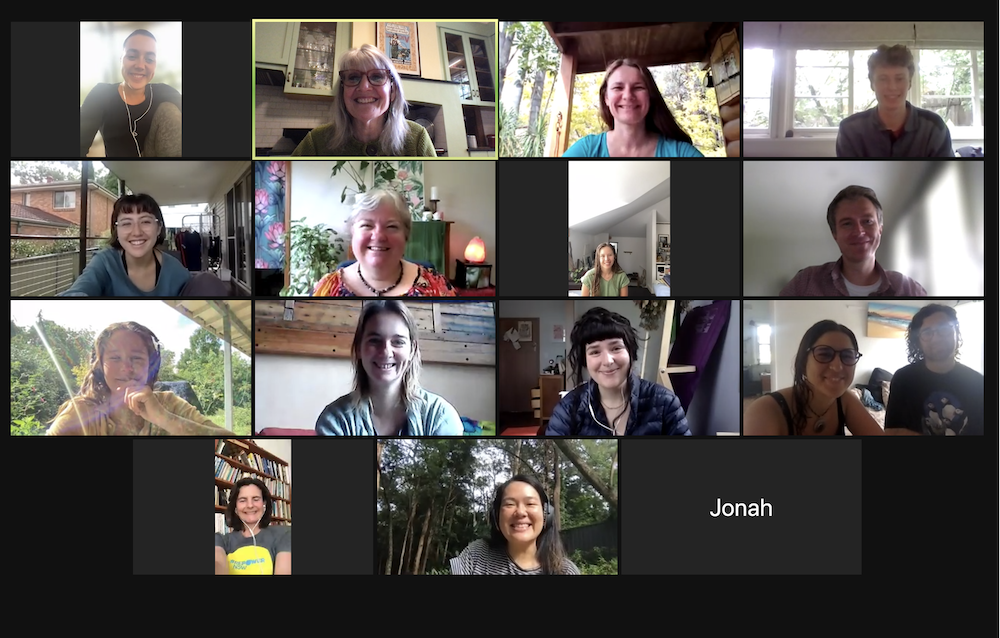
Contributing to the Masterplan to create a Planetary Health Leadership Site
Last Friday the young people had an inspiring briefing by two Council planners so that they could also create a design for their dream Planetary Health Leadership Centre at the old Katoomba Golf Course. They are soo very motivated to create a site that could inspire everyone to get involved in restoring planetary health. It was also a great introduction to young people about what a career in City Planning might be. We were all focused on design as a principled strategy for restoring planetary health.
The most recent definition of Planetary Health by the Planetary Health Alliance is:
Planetary health is a solutions-oriented, transdisciplinary field and social movement
focused on analyzing and addressing the impacts of human disruptions to Earth’s natural systems on
human health and all life on Earth.
It’s exactly what Permaculture has been about for over four decades, so the students in this course are becoming well-equipped to address our disruptions to Earth’s natural systems.
In our first two weeks they’ve studied Global Problems, Ecology, Ethics and Principles, Design Strategies, Mapping, Domestic and Rural Water, Soil Analysis and Repair, Climate, Forests and Windbreaks, Microclimates, Plants and Seed Saving, Patterns in Nature, Zone V Natural Forests including those in the oceans, Weeds, Wildlife, Zone lV Harvest Forests, Zone lll Regenerative Agriculture and Zone ll Orchards and Food Forests.
Our Permaculture Course has been unique in that it has started from, and focused on, the needs of the wider natural world before just focusing in on human needs. It’s recognised that planetary health comes first and foremost, because if our planet isn’t healthy we can’t be either.
Now it’s time for some hands on.
To Prepare for a Permablitz
In order to achieve maximum outcomes for a group of people to create gardens in a very short time, some work needs to be done in advance. Anyone can do this with a group of friends.
- Identify a site where you will work.
- Source and gather the following materials: large amounts of cardboard for suppressing weeds; manure, compost and/or soil, mulch and carbon for compost (straw, sugarcane …), as many edible plants as you can find including herbs and locally appropriate veges, tools (shovels, rakes, mattocks, wheelbarrows, trowels, Stanley knife for cutting pond liner and cardboard), wood chip, rocks and/or logs (for herb spiral and pond), pond liner (minimum 3×4 m), pond plants, sand for bottom of pond, plastic crate or other way to create safety barrier in pond, materials to construct compost bay (wire to make a circular compost, palettes, or a compost bin or tumbler).
- Provide examples and instructions.
To Make a Pond
The best instructions I’ve found to create a frog pond are at Sustainable Gardening Australia. I have one of these drawings laminated with 50cm deep written on it as a guide when people are outside building the pond.
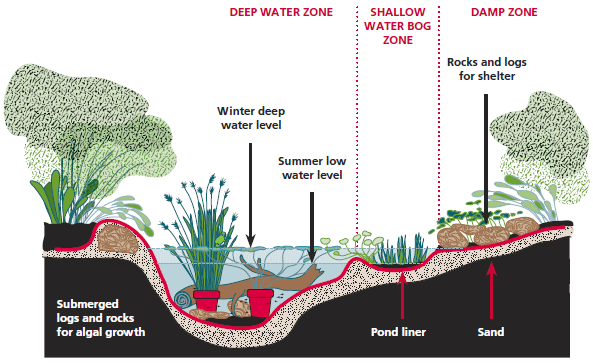
The critical things to remember are:
- If the soil, when you’ve dug it out, is rocky or has sharp bits in it, you’ll need to do a layer of sand so the pond liner won’t puncture with the weight of the water.
- Make sure all sides of the pond are exactly the same height or the water will flow out.
- Make sure you don’t dig a hole bigger than the pond liner. It will need to go down into the hole so the pond will be smaller than the area of the pond liner you’ve purchased. It will need to go out at least 30 cm over the side of the bank. This stops the bank getting too wet and stops weed encroachment.
- Have rocks overlapping the sides, (the sides should go down vertically), so you don’t see the pondliner.
- Mulch around the rocks to cover the pond liner.
- Pond plants will need to remain in their pots and be weighted down by rocks. they can sit on rocks within the pond so that they can reach the surface of the water.
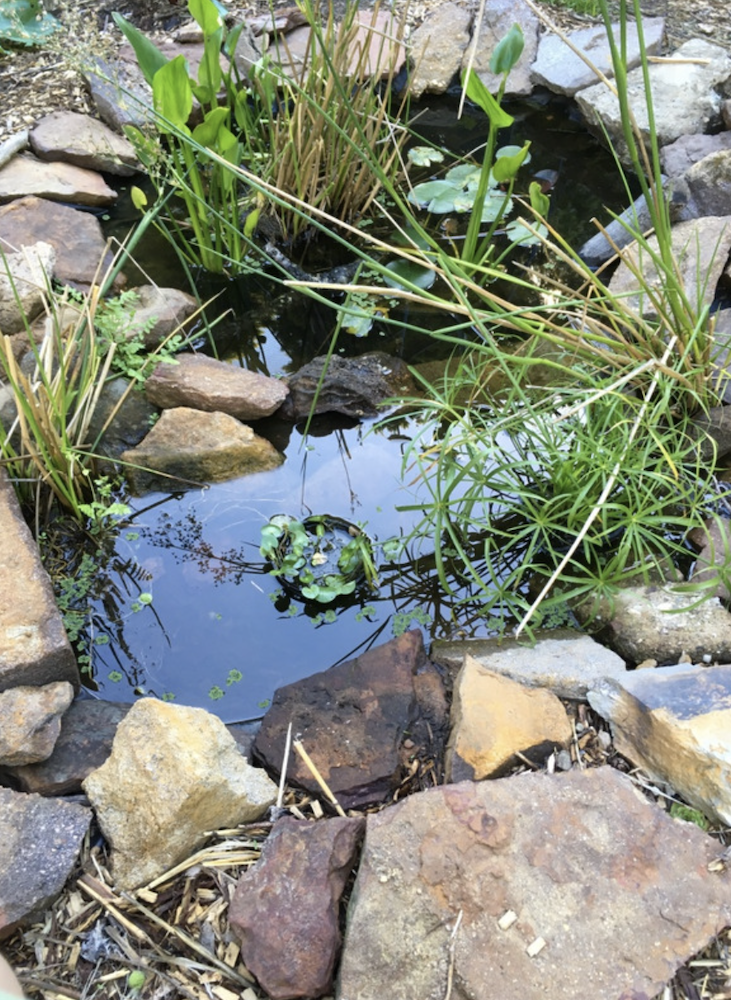
To Make a Sheet Mulch Garden Bed
Use a pitchfork to aerate the soil so water and air can get in.
Sprinkle with lime if soil is very acidic.
Wet cardboard and lay over grass … overlapping well so no grass is visible.
Decide where you want paths and where you want garden beds. No bed should be bigger than two arm lengths because you need to be able to reach the whole garden (from each side) without ever walking on it.
Lay down wood chip where you want paths. You can use a hose to work out size and shape of beds.
Cover garden bed with as much organic matter as you can find … leaves, grass clippings, vege scraps.
Cover that with soil/compost or both (minimum 5cm but deeper the better.). Then mulch with straw, lucerne or sugar cane.
Plant your seedlings etc and water in well.
To make a compost
If you are using a plastic compost bin, dig a bit of a hole if possible. Lay down wire with holes so small hungry little mice can’t get through. Put your compost bin on top of the wire and embed the lot with wood chip so the bin won’t move. Add alternating layer of green matter,(veges, grass clippings), carbon (paper, straw, leaves) and manure.
There are many other composting methods.
Cambodian Compost is quick and doesn’t need turning. It is useful if you have lots of materials at hand.
Build a roughly 1m diameter enclosure with palettes or a ring of chicken or dog wire. Line with cardboard.
You work on a ration of 25:15:5
25cm of finely chopped straw, paper, carbon. Water in.
15cm of green material. Water in.
5cm of manure (chicken if possible). Water in.
Repeat up to 1 metre in height. Cover with damp cardboard.
Do not turn.
To make a Herb Spiral
The reason for a Herb Spiral is to grow vertically and create as many different microclimates as possible.
Herbs that like lots of sun and dry feet go at the top … like sage or rosemary.
Herbs that like shade can go on the southern side.
Herbs that like moisture go at the bottom.
- Cover the area for the spiral and surrounding path with cardboard.
- Collect rocks, bricks, logs and begin outlining the base of the circle you’d like to build.
- Fill the centre with logs, bricks, rocks and organic matter and then use rocks and wood to circle around, adding soil as you go.
- Cover with mulch.
- Plant in herbs and water in well.

The secret to a successful Permablitz is the energy that comes from working together … there is always something for someone to do to keep the momentum up … wetting cardboard, getting a wheelbarrow of soil or wood chip or grass clippings, digging a hole, building a compost.
It is exciting to see what we can achieve when we work together!
Join #AYearInADay Citizen Science Project
We’d love you to collaborate with us and share any NEW action you take to restore planetary health in the comments below. Let us know if other people are influenced by our posts, or yours, so that we can measure outcomes of this project. The first time you leave a comment you’ll need to enter your name and email address.
Our first step is to record 365 new actions. Our second step will be to aim for 365 new actions in one single day. Imagine if we could do it every day of the year! You can subscribe to receive a daily action from us here
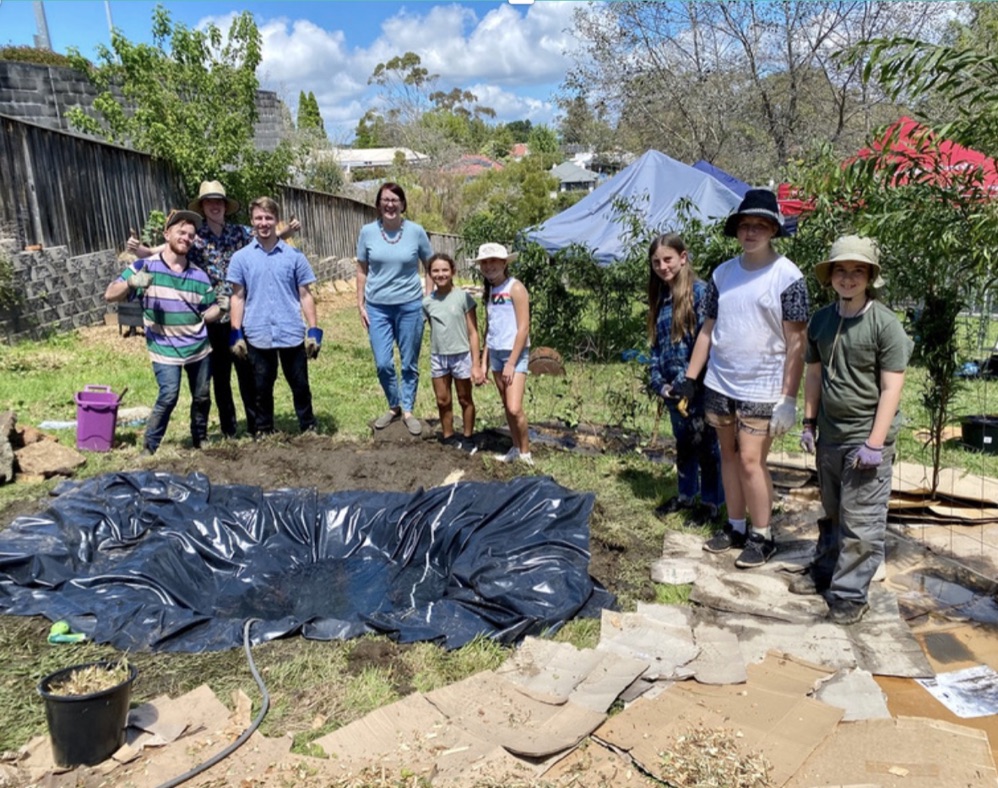

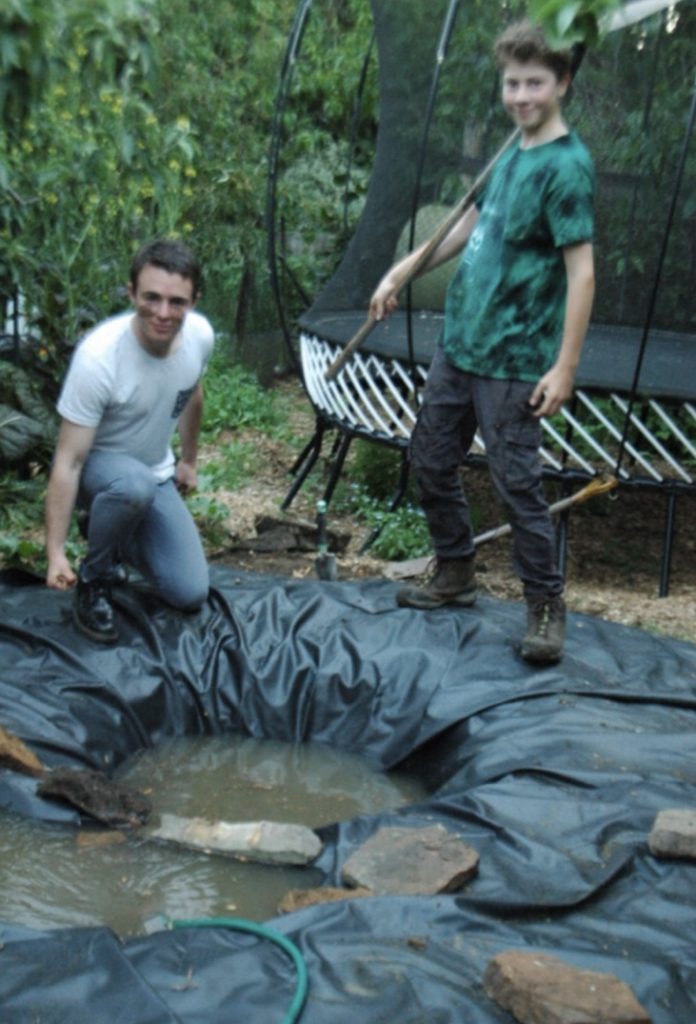
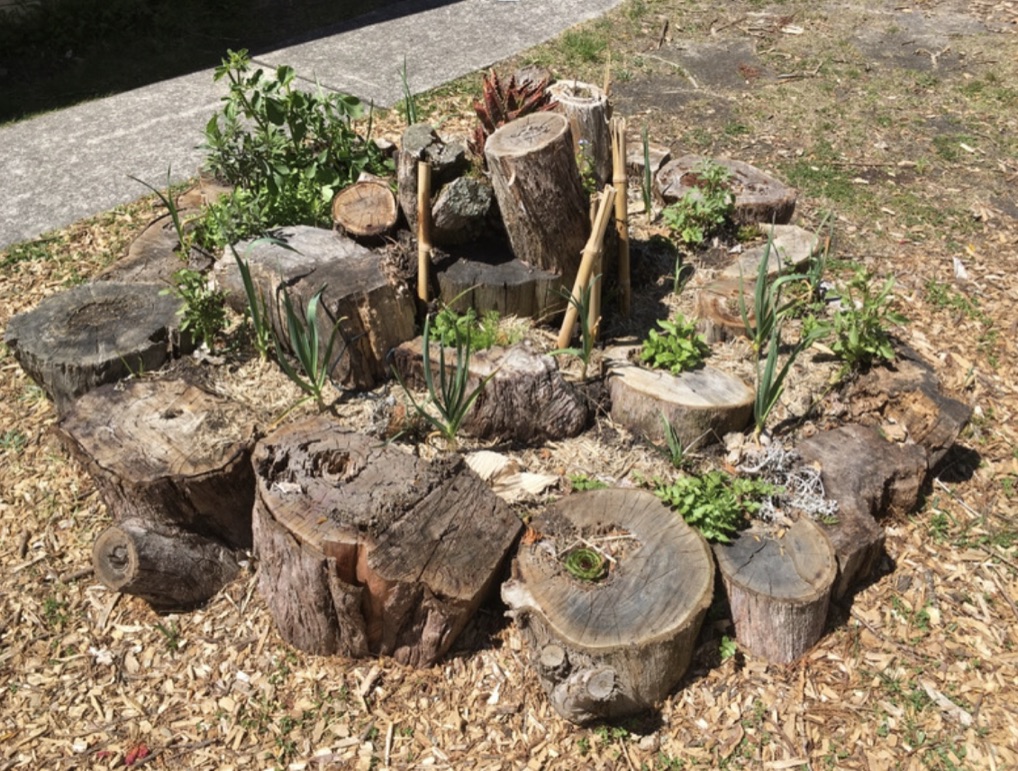




0 Comments